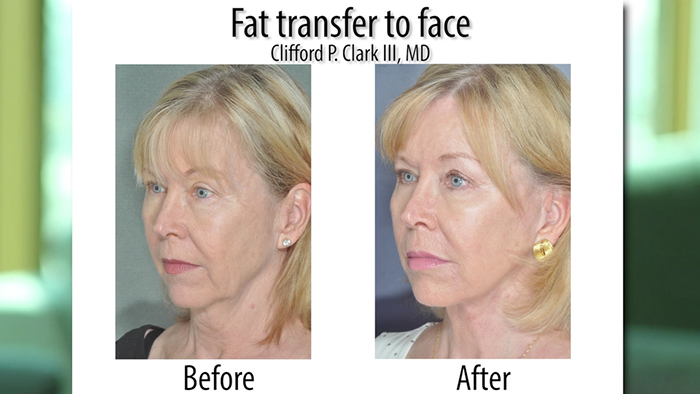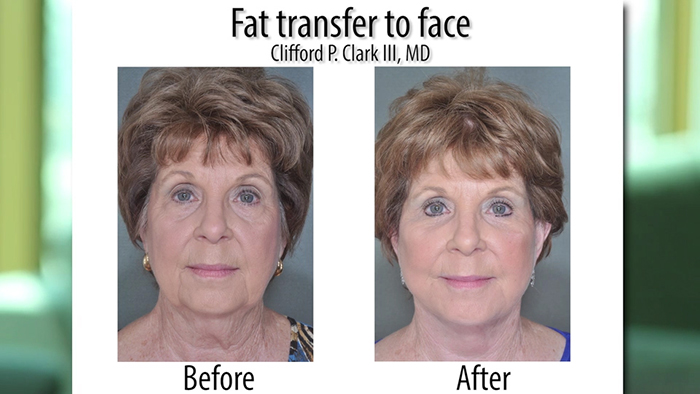Every face ages, it’s a fact of life. The good news is that facial rejuvenation can start at any time. In your 20’s, you may need to treat acne with lasers and skin care. In your 30’s, you may start to develop some fine lines and wrinkles in high movement areas such as the forehead. These are typically addressed with a combination of Botox and skin care. As you move into your 40’s, your face may start to lose volume, particularly in the cheeks and around the mouth. Treating these areas with the appropriate filler can make your face look timeless. Dr. Cliff Clark of Winter Park FL discusses how surgeons decide when non-surgical options are no longer enough.
by Katherine Stuart
and Clifford Clark, III, MD
When is the Right Time to Move From Non-Surgical to Surgical?
One of the biggest changes in how plastic surgeons approach facial aging has been the realization that aging is not just a result of gravity: it is also about a loss of volume. This is why injectables have been such a game changer in the world of facial rejuvenation. Plastic surgeons today can easily replace volume that’s lost in, say, the cheeks or around the mouth, instantly restoring a more youthful shape to the face. The problem is that many patients take volumization to the extreme. The result is a face that’s too full and looks odd. So, how does a plastic surgeon decide when a patient is at the point where he or she will get a better result from surgery whether it be eyelid surgery, brow surgery, a facelift or a neck lift?
It really comes down to the following. When the issues that are causing a patient’s face to age are no longer simply about a loss of volume, but are because the face needs to be elevated then it’s time for surgery. Some patients need a facelift at 50. Some don’t need one until 70. The right time for surgery is really going to depend on the patient. “I wait for my patients to tell me,” says Clark.
Usually, there is an “aha” moment where the patient looks in the mirror and doesn’t recognize his or her reflection. Oftentimes, patients will start with some surgery on the eyes, either removing a little pinch of skin on the upper lid or elevating the brow. Clark calls it, “a sweet spot.” Or they might treat their neck. The right procedures is really going to depend on a patient’s individual needs as everyone ages differently.
A Heart Shaped Face = A Youthful Face
Deciding whether or not it’s time for a facelift really comes down to the jowl. Once a face loses it’s heart shape and becomes square due to fullness along the neckline then it’s time for surgery. While you can camouflage the descent of the lower face for a short period of time with filler in front of the jowl, at a certain point it stops working because it makes the face look too square. And once the face becomes square then, “you need to re-elevate the tissues because it’s hard to compensate for it with a non-surgical approach,” says Clark.
A Natural Looking Facelift is About Redistributing the Fat
Most patients desire a natural looking facelift. They want to look like themselves, only better rested. How can this be achieved? As Clark explains it, “we learned a long time ago that you can’t pull on the skin.” It delivers an overly tight look as if the patient has been stuck in a wind tunnel. The modern technique is for the surgeon to go underneath a muscle and put the fat back in the right place. It’s about “redistributing the fat” that exists and adding back fat into the places where a patient’s lost volume.
Ideally, you want fullness over the cheekbones, a little hollow beneath it with a nice, clean jawline. “One of the major facets of the modern facelift is knowing the direction in which you elevate,” says Clark. Generations ago, plastic surgeons pulled straight back which created a very unnatural sweep to the face. Now, it’s more of upward lift.
“Facial aging is a continuum,” that starts the moment you’re born. Dr. Clark believes, “it takes a thoughtful plastic surgeon to think through how you’re aging, what you need and when you need it.” Look for a surgeon who is board certified, whose before and after pictures you like, and with whom you can develop a long term relationship and set up a consultation.
















Facebook
Twitter
Instagram
YouTube
RSS